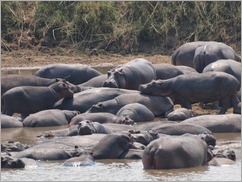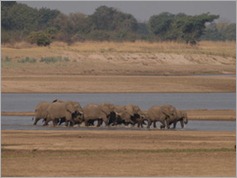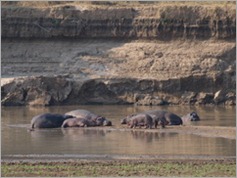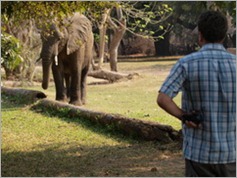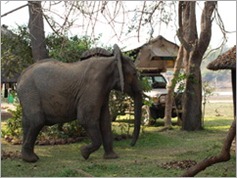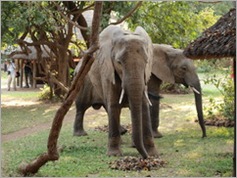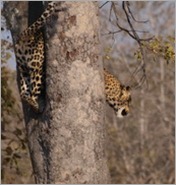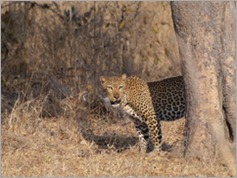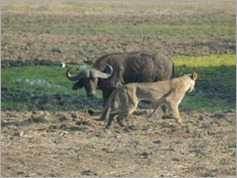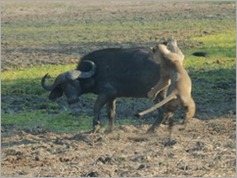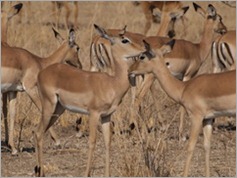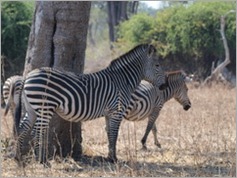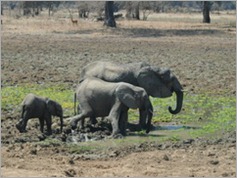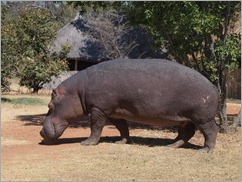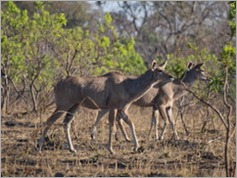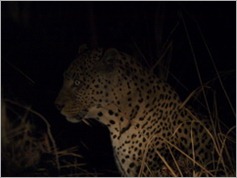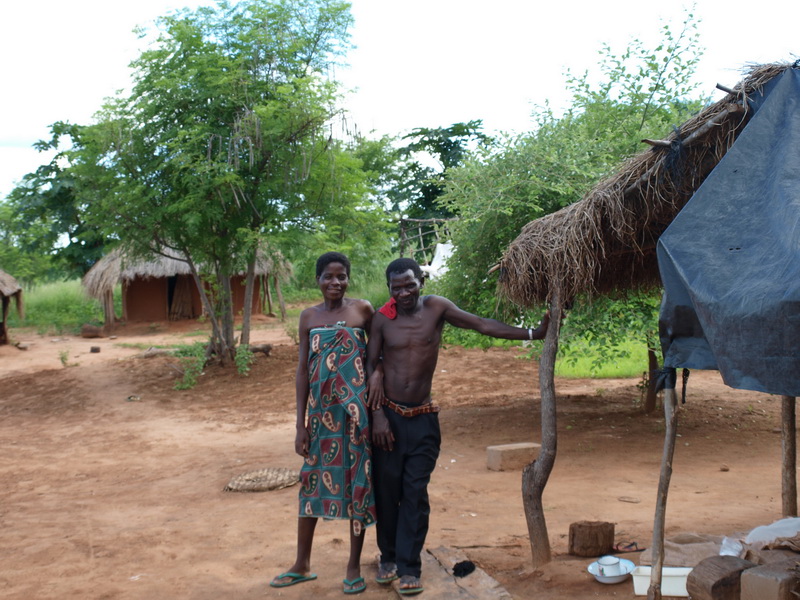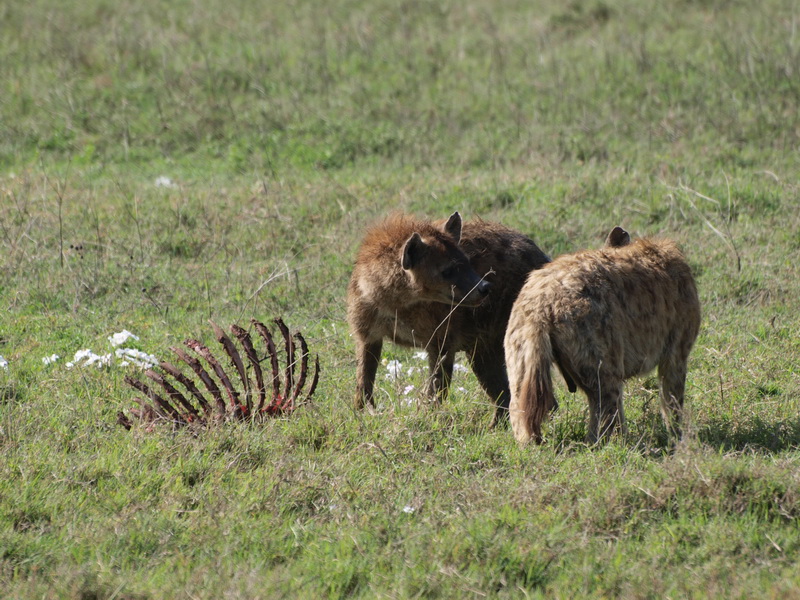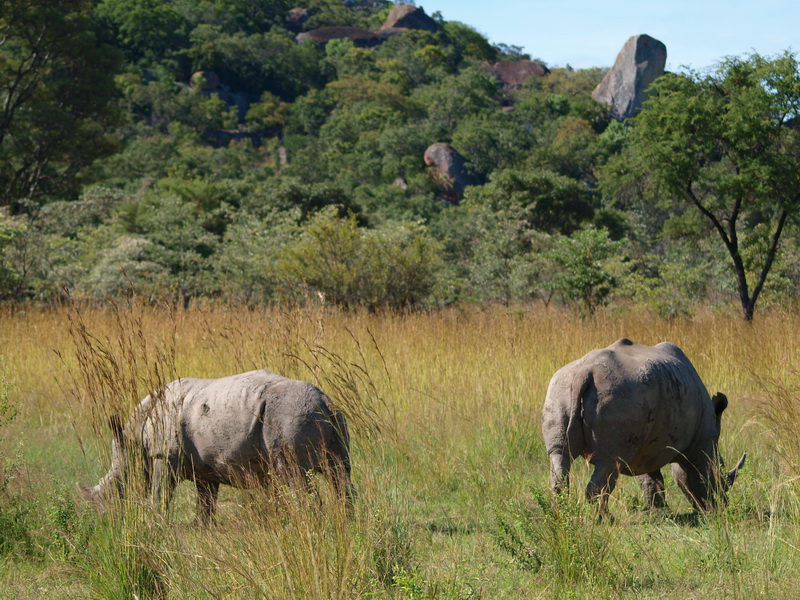As we were no longer going to Uganda and Rwanda we needed to get to Zambia and continue on from where we would have been. That meant we had 3 long days of driving and 2 border crossings ahead of us. We left Tiwi Beach and headed for the Kenya/Tanzania border, crossing quickly and without any hassles.
Back in Tanzania the road instantly turned to dirt, the first part of which was OK, getting a bit worse as you got closer to Tanga, taking about 90 minutes from the border to Tanga. From Tanga on it was good tar. We managed to make it to Mikumi and stopped over once again at Tan Swiss knowing we could eat in their restaurant.
From Mikumi we headed for Mbeya. Once again we encountered the Tanzanian police. We were pulled over by a very arrogant officer who advised us we were doing 52km/h in a 50 zone. There was no way – we had just come to a complete stop behind a turning truck and our car will not get to 52 in 150 metres! We told him that the speed on his radar was not from our car (and as if their guns are calibrated well enough to pick you up 2 km over the limit). He then tried to tell Wayne it was an offence to drive in bare feet – yeah right. Wayne just kept telling him he was not paying a fine. Wayne had to get out to go and talk to him and after about 5 minutes the guy told him that if it was not the speed of our car to leave, so of course we did! We spent the night about 20km south of Mbeya at the ICC Mission for about $6. They will let you park on the grass and give you a room key for the shower and toilet.
From Mbeya we headed for the Zambian border. Once again the police were out in force. This time we were doing 67 in a 50 zone. Wayne kept asking where the 50km sign was as there was none. There was one arrogant officer again who just kept telling him he had to pay a fine and another reasonable guy who Wayne spoke to. Eventually Wayne was told that every village is a 50km zone whether there is a sign or not – makes it pretty hard when there are houses almost the entire length of the road to the border. Do we do 50km/h the whole way just in case? As it turned out we didn’t have 20,000 Tsh for the fine anyway as we spent the last of our money on diesel. Once we explained this we were given the option of paying without a receipt, surprise surprise. In the end we gave them 10,000 Tsh as we wanted to get going as we had a long day ahead of us. It is so frustrating though when you see so many unroadworthy vehicles being driven at ridiculous speeds. No one wears a seatbelt, half their lights don’t work, nobody obeys road markings or signs, yet it is more important to raise money by sitting with a radar than it is to make the roads safe. Oh well, this is Africa!
Next was the most confusing border crossing we have encountered yet. Leaving Tanzania was fine, but getting into Zambia was ridiculous. It went something like this:
-
Complete Tanzania departure form and get exit stamp in passport
-
Go to Tanzania customs office, find the guy in his office as there is no one at the counter and get him to complete our carnet.
-
Leave Tanzania and drive to Zambian side.
-
Go to immigration, complete entry form and pay $US50 each for a visa. All straightforward.
-
Now the fun part with the car begins.
-
Go to the exit gate and have the carnet completed but not stamped ((imagine completing it AND stamping it at the same place!)
-
Walk back to the building beside immigration and find the office where the guy will ask you to hand him the stamp (as he is so busy) so he can stamp the carnet. Tear off the slip yourself and hand it back to him.
-
Go to another office beside immigration (all of which are unmarked) and fight your way to the front of the 30 odd truck drivers that are also waiting in there, to be told he is busy counting up yesterday’s money and to come back when he is finished.
-
Go back when he has finished, hand over carnet and be told you need to pay 200,000 Kw for carbon tax and it has to be paid in Zambia Kwatcha which we have none of.
-
Find a moneychanger and argue about the exchange rate as they try to rip you off (the few other times we have changed money at a border the rate has been more than fair and we have not had to bargain with them). Finally get them to agree to a fair rate and change money.
-
Return with the kwatcha and pay the carbon tax. You will be provided a receipt and your carnet returned.
-
Try and find the office (a shipping container past immigration) in order to pay road tax $US30 (which had to be paid in $US). Once again fight your way to the front of the queue, which is worse than the other queue. You must know which border you are leaving Zambia from as it is recorded on the receipt. Get your receipt.
-
After about 2 hours of running around you finally drive to the exit gate where they will check your receipts and carnet.
-
Finally you are in Zambia!
The first part of the road south is a mixture of good tar where you can do 100km/h but with huge potholes and road edges crumbling away thrown in just to make it interesting. There are heaps of trucks, once again travelling at speed, so it is a road requiring concentration, lots of braking and swerving around holes. Needless to say we saw several truck accidents along the way.
 By mid afternoon we reached Kapishya Hot Springs where we are staying for 2 nights. It is a lovely campsite beside the river as well as having a crystal clear 40C hot spring that has no sulphur in it. We even washed our hair in it this morning. They have excellent, really hot showers, flush loos and heaps of free firewood.
By mid afternoon we reached Kapishya Hot Springs where we are staying for 2 nights. It is a lovely campsite beside the river as well as having a crystal clear 40C hot spring that has no sulphur in it. We even washed our hair in it this morning. They have excellent, really hot showers, flush loos and heaps of free firewood.
Having made it to Zambia we are now back into our more leisurely mode of travel thank goodness!


